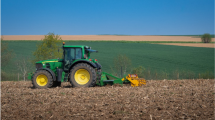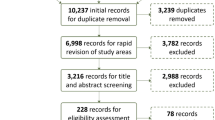Abstract
Farmer-to-farmer outreach was used within a targeted watershed to promote the installation of conservation buffers. In this program called “FarmLink”, four farmers/landowners were employed part-time as “advisors” and trained by University of Nebraska-Lincoln Extension, Natural Resources Conservation Service, and Natural Resources District personnel. Topics included basic buffer design and benefits, availability of incentive programs, and sales techniques. These individuals then contacted their neighbors to explain the need for and benefits of buffers and other conservation practices. In early 2003, 42 landowners were contacted, leading to contracts for the establishment of 16 separate conservation practices on 24.8 ha (61.3 acres) of farmland. These included just over 8 ha (20 acres) of grassed waterways or similar plantings and 14 ha (35 acres) of streamside buffers. In addition, because of information received in the training sessions, one of the advisors installed 1.7 ha (4.3 acres) of streamside buffers, 0.45 ha (1.1 acres) of grassed waterways, and 2.0 ha (5.0 acres) of grasses and forbs on his own land. During these contacts, it became apparent that: (1) many farmers and landowners were not familiar with the multitude of programs available to assist with the installation and maintenance of conservation practices; and (2) landowners generally appreciated the personal touch of someone coming out to talk directly to them, pointing out specific areas on their land where conservation practices could best be implemented, discussing available compensation programs, and describing management needed to help ensure practice success. Although one-to-one contacts cannot be used in all cases, it was demonstrated to be effective in this watershed.
Similar content being viewed by others
References
Bannister ME, Josiah SJ (1993) Agroforestry training and extension: the experience from Haiti. Agroforest Syst 23:239–251
Dickey EC, Shelton DP, Jasa PJ (1991) Enhancing soil conservation practice adoption with targeted educational programs. Appl Eng Agric 7(1):91–96
FSA (2005) Personal communication with county Farm Service Agency personnel
Josiah SJ (1993) Implementing large-scale agroforestry projects through umbrella NGOs: a case analysis from Haiti. In: Proc 3rd No Am Agroforestry Conf, August 1993. Ames, IA, pp 349–360
NDEQ (2002) 2002 Section 303(d) list of impaired waterbodies for Nebraska. Nebraska Dept Environmental Quality. http://www.deq.state.ne.us/. Accessed September 2004
NRCS (1998) Filter strip. Conservation Practice Standard 393. Nebraska Natural Resources Conservation Service, Lincoln, NE
NRCS (2002a) Critical area planting. Conservation Practice Standard 342. Nebraska Natural Resources Conservation Service, Lincoln, NE
NRCS (2002b) Grassed waterway. Conservation Practice Standard 412. Nebraska Natural Resources Conservation Service, Lincoln, NE
Petchenik J (1999) The national conservation buffer initiative – a qualitative evaluation. Applied Research Systems Inc., Madison, WI
Shelton DP, Dickey EC, Jasa PJ, Biere DA, Smydra-Krotz S (1991) A cooperative educational program to reduce soil erosion. J Soil Water Conserv 46(3):169-173
Shelton DP, Josiah SJ, Franti TG (2000) Accelerating riparian buffer adoption to enhance water quality and farm income. Extension Education Project. USDA-CSREES, Washington, DC
White TA (1994) Collective action for watershed management: lessons from Haiti. PhD Thesis, University of Minnesota
Acknowledgments
Financial support was provided by USDA-CSREES and University of Nebraska-Lincoln Extension. Thanks are expressed to the Shell Creek Watershed Improvement Group, Lower Platte North Natural Resources District, PrairieLand Resource Conservation and Development Council, Natural Resources Conservation Service, and especially the FarmLink advisors and landowners who installed conservation practices.
Author information
Authors and Affiliations
Corresponding author
Rights and permissions
About this article
Cite this article
Shelton, D.P., Wilke, R.A., Franti, T.G. et al. Farmlink: promoting conservation buffers farmer-to-farmer. Agroforest Syst 75, 83–89 (2009). https://doi.org/10.1007/s10457-008-9130-9
Published:
Issue Date:
DOI: https://doi.org/10.1007/s10457-008-9130-9




